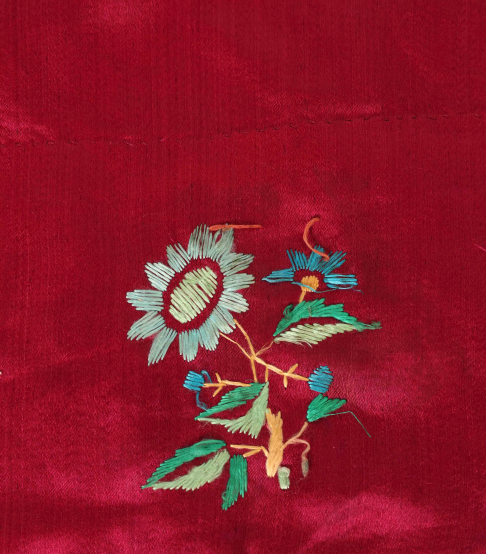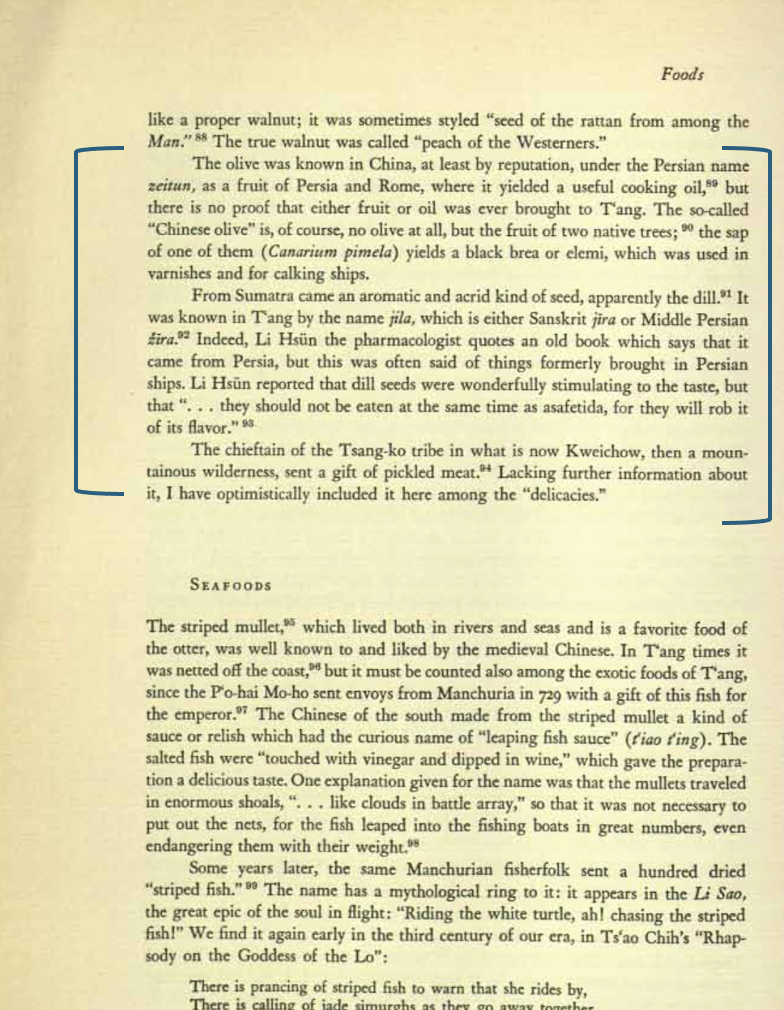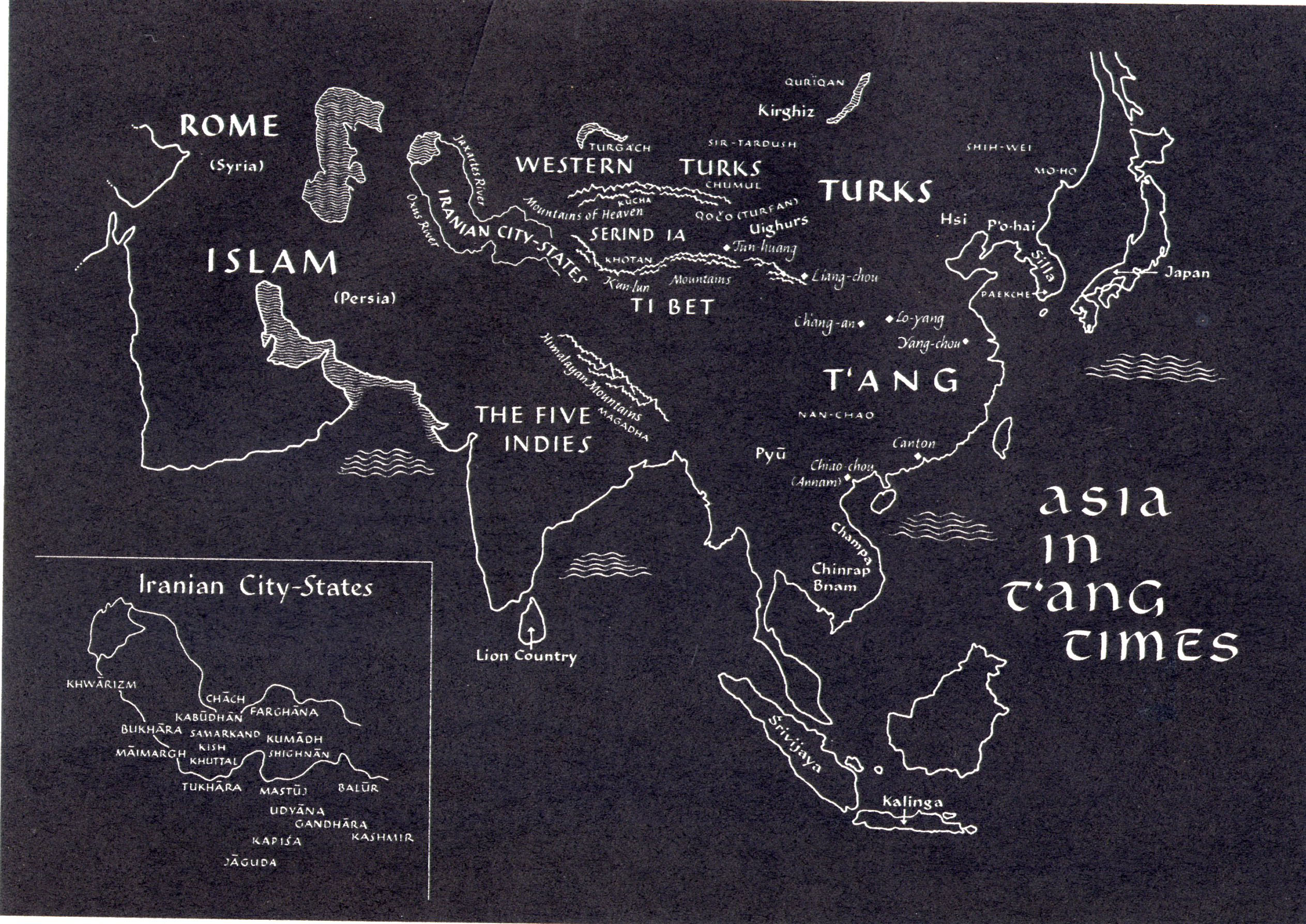




The origin of the word satin Sātin: (Arabic: Zaytuni: from Chinese port of Zayton in Quanzhou province where it was exported from and acquired by Arab merchants), one of the three basic types of woven fabric with a glossy top surface and a dull back. Originated in China and was fundamentally woven in silk. has long intrigued scholars of linguistics and textile history. The most widely accepted theory traces its derivation to the Arabic zaitun or zayton, a reference to the Chinese port city of Quanzhou.
Satin Sātin: (Arabic: Zaytuni: from Chinese port of Zayton in Quanzhou province where it was exported from and acquired by Arab merchants), one of the three basic types of woven fabric with a glossy top surface and a dull back. Originated in China and was fundamentally woven in silk. is a luxurious fabric characterized by a glossy surface and smooth texture, often associated with opulence and high social status. The term satin Sātin: (Arabic: Zaytuni: from Chinese port of Zayton in Quanzhou province where it was exported from and acquired by Arab merchants), one of the three basic types of woven fabric with a glossy top surface and a dull back. Originated in China and was fundamentally woven in silk. has been documented in various European languages, appearing as satin Sātin: (Arabic: Zaytuni: from Chinese port of Zayton in Quanzhou province where it was exported from and acquired by Arab merchants), one of the three basic types of woven fabric with a glossy top surface and a dull back. Originated in China and was fundamentally woven in silk. in French, satijn in Dutch, and seta in Italian. While its phonetic structure varies slightly across languages, its etymological origins are widely attributed to medieval Arabic influences, reflecting the linguistic and commercial interconnectedness of Eurasian civilizations.
The Arabic Connection: "Zaitun" and the City of Quanzhou
Known in earlier times as Cìtóngchéng, Quanzhou played a pivotal role in medieval trade, particularly in the dissemination of luxurious silk textiles. The city's historical nickname, tsheH dwung dzyeng or Cìtóngchéng, meaning "Coral Coral: (Greek: korallion, probably from Hebrew: goral – small pebbles), is a pale to medium shade of pink with orange or peach undertones, resembling the colour of certain species of coral. Tree City" or "Tung Tree City," is attributed to Liu Congxiao (906–962 CE), a general during the Five Dynasties and Ten Kingdoms period (907–979 CE), who encouraged the extensive planting of the Cìtóng (Erythrina variegata) or Tung tree. This article explores the linguistic transformation of satin Sātin: (Arabic: Zaytuni: from Chinese port of Zayton in Quanzhou province where it was exported from and acquired by Arab merchants), one of the three basic types of woven fabric with a glossy top surface and a dull back. Originated in China and was fundamentally woven in silk., analysing its phonetic evolution through intercultural exchanges and its connection to the rich commercial history of the maritime Silk Road.
One of the strongest etymological theories links the word satin Sātin: (Arabic: Zaytuni: from Chinese port of Zayton in Quanzhou province where it was exported from and acquired by Arab merchants), one of the three basic types of woven fabric with a glossy top surface and a dull back. Originated in China and was fundamentally woven in silk. to the Arabic zaitun or zayton, a term used by medieval Arab traders to describe the bustling port city of Quanzhou. Located in Fujian Province, Quanzhou was a key maritime hub during the Song (960–1279) and Yuan (1271–1368) dynasties, facilitating trade between China, the Middle East, and Europe. The city was famous for its role in the silk trade, exporting high-quality textiles, including the fabric now known as satin Sātin: (Arabic: Zaytuni: from Chinese port of Zayton in Quanzhou province where it was exported from and acquired by Arab merchants), one of the three basic types of woven fabric with a glossy top surface and a dull back. Originated in China and was fundamentally woven in silk..
The Arabic term zaitun appears in several historical texts, including those by the famous traveller Ibn Battuta, who visited Quanzhou in the 14th century. Arab traders adopted the term as a phonetic approximation of Quanzhou’s historical nickname, Cìtóngchéng, which translates to "Coral Coral: (Greek: korallion, probably from Hebrew: goral – small pebbles), is a pale to medium shade of pink with orange or peach undertones, resembling the colour of certain species of coral. Tree City" or "Tung Tree City." The planting of the Tung tree was encouraged by Liu Congxiao due to its economic significance—the tree’s sap yielded Tung oil, which was extensively used for varnishing and caulking in the shipbuilding industry. Given Quanzhou’s status as a vital maritime trade centre, the presence of these trees further supported the region's economic and commercial endeavours.

A linguistic shift is believed to have occurred when Chinese traders in Persia and Arabia encountered the olive tree (Olea europaea), which they referred to as qidan, a term influenced by the Aramaic zaitā (meaning "olive"). The phonetic similarity between Cìtóng and qidan may have contributed to Persian and Arab merchants designating Quanzhou as Zaitun or "Olive Town." Over time, this designation became synonymous with the high-quality textiles produced in the city, further embedding the term into the linguistic fabric of trade.
Quanzhou as a Centre of Maritime Trade

As documented in Trade, Travel, and Exploration in the Middle Ages: An Encyclopaedia by Friedman and Figg, Quanzhou functioned as a crucial maritime trade centre, in 1087 CE during the Song Dynasty (960–1279 CE). The rapid population growth during this period led to a substantial increase in the volume of cargo passing through the port. Quanzhou’s geographically advantageous position provided access to inland cities via an extensive network of roads and waterways, further consolidating its role as a dominant trade hub.
The strategic significance of Quanzhou was further emphasized during the Yuan Dynasty (1271–1368 CE). Recognizing its importance, the Mongol rulers utilized Quanzhou as a launching point for military campaigns, including the ill-fated invasions of Japan in 1281 CE and Java in 1292 CE. By the late 13th and early 14th centuries, Quanzhou had evolved into a thriving centre for international trade, attracting a significant population of foreign merchants, particularly Arab and Persian Muslims. This period of prosperity was largely facilitated by the Mongol administration’s relatively tolerant policies towards foreign traders.
Archaeological and architectural evidence from this era attests to the presence of a diverse foreign community in Quanzhou. Inscriptions on tombstones discovered in the region reveal a variety of scripts, including Syrian, Arabic, and Latin, underscoring the city's cosmopolitan character. However, this era of international exchange came to an abrupt decline with the rise of the Ming Dynasty (1368–1644 CE). The new regime implemented stringent trade policies, often described as isolationist, which significantly curtailed China’s interactions with the Middle East and the broader Western world, marking the end of Quanzhou’s prominence as a global maritime trading centre.
Linguistic Evolution: From "Zaitun" to "Satin Sātin: (Arabic: Zaytuni: from Chinese port of Zayton in Quanzhou province where it was exported from and acquired by Arab merchants), one of the three basic types of woven fabric with a glossy top surface and a dull back. Originated in China and was fundamentally woven in silk."
The transition from zaitun to satin Sātin: (Arabic: Zaytuni: from Chinese port of Zayton in Quanzhou province where it was exported from and acquired by Arab merchants), one of the three basic types of woven fabric with a glossy top surface and a dull back. Originated in China and was fundamentally woven in silk. likely occurred through phonetic adaptation as the term moved westward along trade routes. Medieval Latin texts began incorporating variations of the word, with references to "aceytuni" and "setinus" appearing in European documents from the 12th and 13th centuries. The phonetic shift can be attributed to the linguistic influences of Romance languages, which often adapted Arabic loanwords to fit their phonological structures.
As trade intensified between the Middle East and Europe, the term further evolved into its modern European forms. The Old French satin Sātin: (Arabic: Zaytuni: from Chinese port of Zayton in Quanzhou province where it was exported from and acquired by Arab merchants), one of the three basic types of woven fabric with a glossy top surface and a dull back. Originated in China and was fundamentally woven in silk., recorded in the 15th century, closely resembles the English spelling and pronunciation we recognize today. This linguistic progression reflects the cultural and economic exchanges that defined the medieval and early modern textile industries.
Alternative Theories on the Origin of "Satin Sātin: (Arabic: Zaytuni: from Chinese port of Zayton in Quanzhou province where it was exported from and acquired by Arab merchants), one of the three basic types of woven fabric with a glossy top surface and a dull back. Originated in China and was fundamentally woven in silk."
While the Arabic derivation from zaitun remains the most widely accepted theory, an alternative hypothesis suggests that the word satin Sātin: (Arabic: Zaytuni: from Chinese port of Zayton in Quanzhou province where it was exported from and acquired by Arab merchants), one of the three basic types of woven fabric with a glossy top surface and a dull back. Originated in China and was fundamentally woven in silk. originates from the Latin sēta, itself derived from saeta, which traces its roots to the Proto-Indo-European sh₂ey- meaning "to bind" or "to fetter." This etymological connection is potentially significant, as the satin Sātin: (Arabic: Zaytuni: from Chinese port of Zayton in Quanzhou province where it was exported from and acquired by Arab merchants), one of the three basic types of woven fabric with a glossy top surface and a dull back. Originated in China and was fundamentally woven in silk. weave is characterized by a unique structure in which four or more weft Weft: one of the two basic components used in weaving that transforms thread or yarns into a piece of fabric. It is the crosswise thread on a loom that is passed over and under the warp threads. yarns float over a single warp Warp: One of the two basic components used in weaving which transforms thread or yarns to a piece of fabric. The warp is the set of yarns stretched longitudinally in place on a loom before the weft Weft: one of the two basic components used in weaving that transforms thread or yarns into a piece of fabric. It is the crosswise thread on a loom that is passed over and under the warp threads. is introduced during the weaving process. yarn, or vice versa. These "floats," which refer to missed interlacings where the warp Warp: One of the two basic components used in weaving which transforms thread or yarns to a piece of fabric. The warp is the set of yarns stretched longitudinally in place on a loom before the weft Weft: one of the two basic components used in weaving that transforms thread or yarns into a piece of fabric. It is the crosswise thread on a loom that is passed over and under the warp threads. is introduced during the weaving process. yarn lies on top of the weft Weft: one of the two basic components used in weaving that transforms thread or yarns into a piece of fabric. It is the crosswise thread on a loom that is passed over and under the warp threads. in a warp Warp: One of the two basic components used in weaving which transforms thread or yarns to a piece of fabric. The warp is the set of yarns stretched longitudinally in place on a loom before the weft Weft: one of the two basic components used in weaving that transforms thread or yarns into a piece of fabric. It is the crosswise thread on a loom that is passed over and under the warp threads. is introduced during the weaving process. -faced satin Sātin: (Arabic: Zaytuni: from Chinese port of Zayton in Quanzhou province where it was exported from and acquired by Arab merchants), one of the three basic types of woven fabric with a glossy top surface and a dull back. Originated in China and was fundamentally woven in silk., contribute to the fabric’s distinctive smoothness and high sheen. Unlike other weaving techniques, the reduced scattering of light across satin Sātin: (Arabic: Zaytuni: from Chinese port of Zayton in Quanzhou province where it was exported from and acquired by Arab merchants), one of the three basic types of woven fabric with a glossy top surface and a dull back. Originated in China and was fundamentally woven in silk.’s surface results in an enhanced reflective quality, making the fabric exceptionally lustrous.
Typically, satin Sātin: (Arabic: Zaytuni: from Chinese port of Zayton in Quanzhou province where it was exported from and acquired by Arab merchants), one of the three basic types of woven fabric with a glossy top surface and a dull back. Originated in China and was fundamentally woven in silk. employs a warp Warp: One of the two basic components used in weaving which transforms thread or yarns to a piece of fabric. The warp is the set of yarns stretched longitudinally in place on a loom before the weft Weft: one of the two basic components used in weaving that transforms thread or yarns into a piece of fabric. It is the crosswise thread on a loom that is passed over and under the warp threads. is introduced during the weaving process. -faced weave, where the warp Warp: One of the two basic components used in weaving which transforms thread or yarns to a piece of fabric. The warp is the set of yarns stretched longitudinally in place on a loom before the weft Weft: one of the two basic components used in weaving that transforms thread or yarns into a piece of fabric. It is the crosswise thread on a loom that is passed over and under the warp threads. is introduced during the weaving process. threads predominate on the surface, though variations exist that utilize a weft Weft: one of the two basic components used in weaving that transforms thread or yarns into a piece of fabric. It is the crosswise thread on a loom that is passed over and under the warp threads.-faced configuration. Proponents of the Latin origin theory argue that the term satin Sātin: (Arabic: Zaytuni: from Chinese port of Zayton in Quanzhou province where it was exported from and acquired by Arab merchants), one of the three basic types of woven fabric with a glossy top surface and a dull back. Originated in China and was fundamentally woven in silk. could have emerged independently in Western Europe due to the technical and structural properties of the fabric. Nevertheless, this theory remains a minority view, as the preponderance of historical and linguistic evidence supports the Arabic-Chinese derivation linked to Quanzhou’s prominence in the medieval silk trade.
The etymology of satin Sātin: (Arabic: Zaytuni: from Chinese port of Zayton in Quanzhou province where it was exported from and acquired by Arab merchants), one of the three basic types of woven fabric with a glossy top surface and a dull back. Originated in China and was fundamentally woven in silk. provides a compelling illustration of how language evolves through commercial and cultural interactions. The fabric’s name, rooted in the Arabic zaitun, ultimately derives from the Chinese city of Quanzhou, historically known as Cìtóngchéng. The linguistic resemblance between Cìtóng and qidan may have further contributed to the adoption of Zaitun as a name for the city by Persian and Arab merchants. This linguistic journey underscores the profound impact of trade networks on global language development, reinforcing the enduring legacy of the maritime Silk Road. Further research into historical trade records and linguistic adaptations may yield even deeper insights into the intricate pathways of word transmission across civilizations.